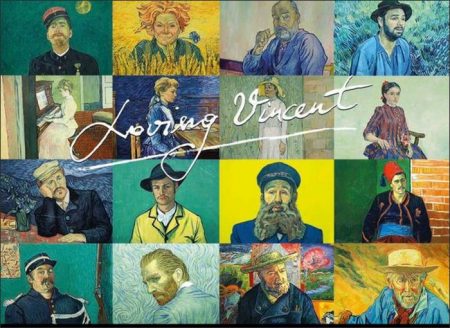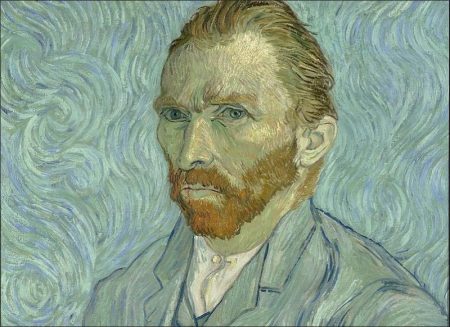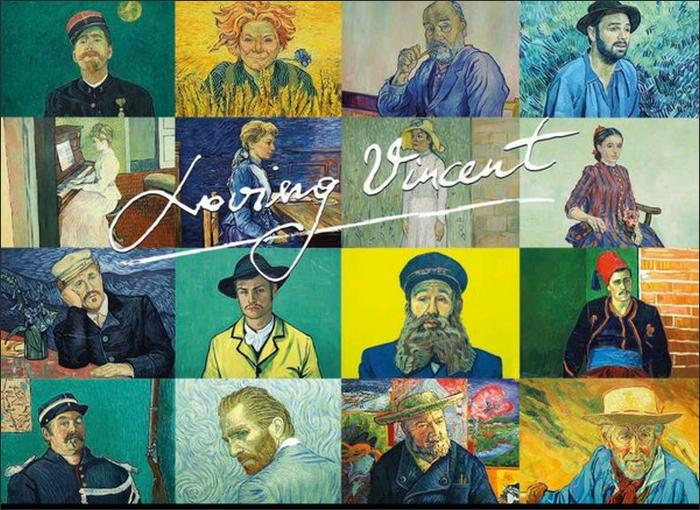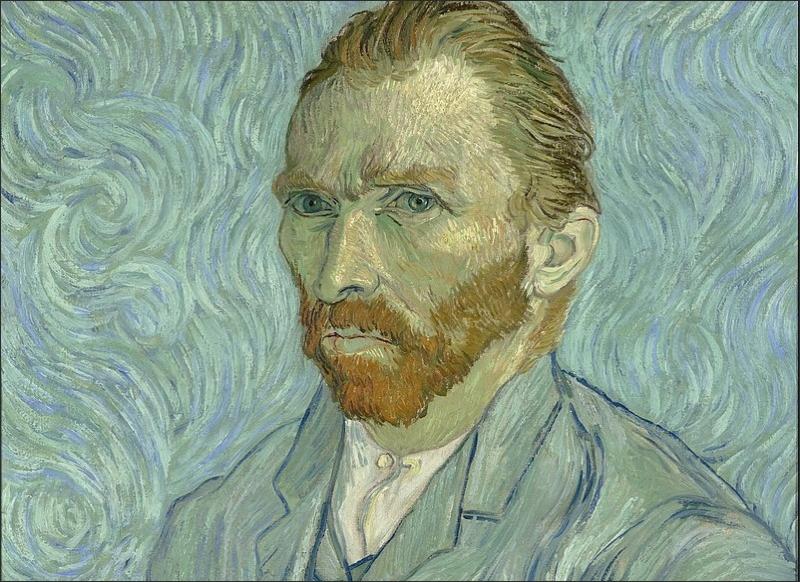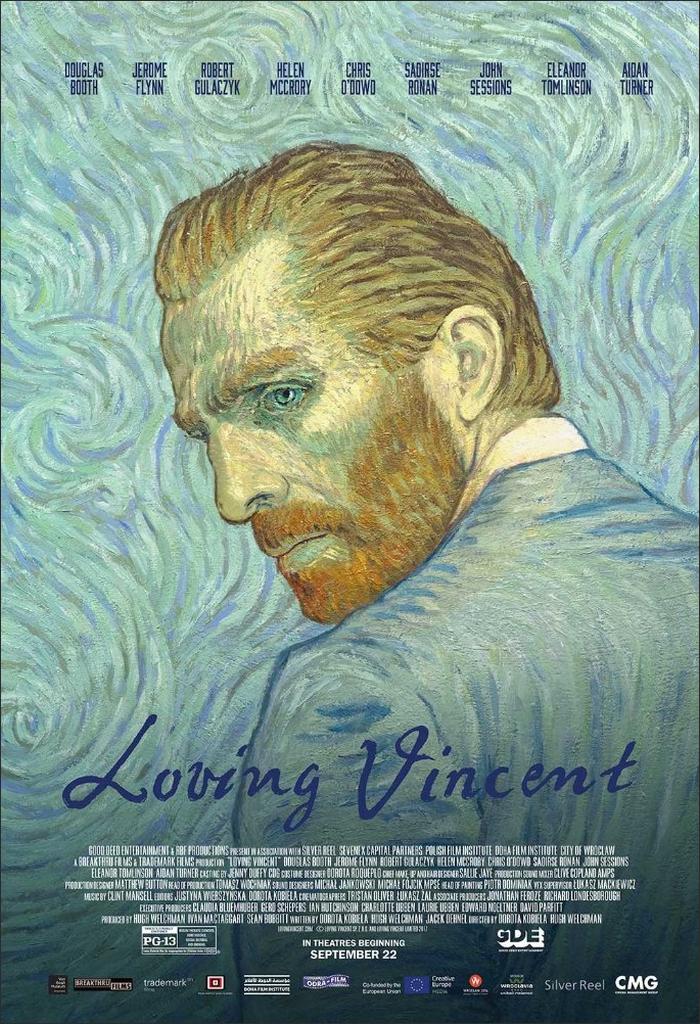Taglines: The truth is, we cannot speak other than by our paintings.
Loving Vincent Movie Storyline. A year after the death of the artist, Vincent van Gogh, Postman Roulin gets his slacker son, Armand, to hand deliver the artist’s final letter written to his now late brother, Theo, to some worthy recipient after multiple failed postal delivery attempts. Although disdainful of this seemingly pointless chore, Armand travels to Auvers-sur-Oise where a purported close companion to Vincent, Dr. Gachet, lives.
Having to wait until the doctor returns from business, Armand meets many of the people of that village who not only knew Vincent, but were apparently also models and inspirations for his art. In doing so, Armond becomes increasingly fascinated in the psyche and fate of Van Gogh as numerous suspicious details fail to add up. However, as Armond digs further, he comes to realize that Vincent’s troubled life is as much a matter of interpretation as his paintings and there are no easy answers for a man whose work and tragedy would only be truly appreciated in the future.
Loving Vincent is a 2017 animated biographical drama film about the life of painter Vincent van Gogh, and in particular, the circumstances of his death. It is the first fully painted animated feature film.[7] The film, written and directed by Dorota Kobiela and Hugh Welchman, is a Polish production, funded by the Polish Film Institute, and partially through a Kickstarter campaign.
First conceived as a 7 minute short movie in 2008, Loving Vincent was idealized by Dorota Kobiela, a painter herself, after studying the techniques and the artist’s story through his letters. Each of the film’s 65,000 frames is an oil painting on canvas, using the same technique as Van Gogh, created by a team of 125 painters. The film premiered at the 2017 Annecy International Animated Film Festival. It won Best Animated Feature Film Award at the 30th European Film Awards in Berlin and was nominated for Best Animated Feature at the 90th Academy Awards.
As of 28 January 2018, the film has grossed over $30.2 million (in USD) worldwide, with domestic earnings totaling $6.5 million. Abroad, the film has most notably grossed $2.9 million in South Korea, $1.5 million in Italy and $10.8 million in China.
About the Story
One year after Vincent van Gogh’s death, Postman Joseph Roulin asks his son Armand to personally deliver Van Gogh’s last letter to his brother, Theo, after previous attempts to mail the letter had failed. Despite not having been fond of Van Gogh and recalling the incident when the deceased mutilated his ear and gave it to a local prostitute, Armand begrudgingly accepts due to his father’s affection for the painter. Postman Roulin acknowledges Van Gogh’s mental illness and blames the other townspeople for ostracising and driving him out. He also expresses bemusement about the cause of Van Gogh’s death because, six weeks before he died, Van Gogh sent the postman a letter that described his mood as calm and normal.
Armand visits art supplier Père Tanguy in Montmartre, who informs him that a depressed Theo, who suffered from syphilis, had deteriorated and died six months after Vincent. He recalls his time in Paris with Van Gogh as well as the latter’s strained family life and eventual pursuit of art after several failed career paths. While describing Van Gogh’s funeral, Tanguy mentions that Dr. Gachet, who housed Van Gogh after his release from an asylum and shared a mutual love of art with him, had treated Van Gogh as family and had been visibly distraught at the funeral. Tanguy recommends that Armand get the forwarding address for Theo’s widow from Gachet.
After travelling to Auvers-sur-Oise, Armand learns that Dr. Gachet is out on business from his housekeeper, Louise, who expresses contempt for Van Gogh. While waiting for the doctor’s return, Armand stays at the same inn that Van Gogh did during his time in the area. There he meets temporary proprietress Adeline Ravoux, who was fond of Van Gogh and was present on the day of his apparent suicide attempt and eventual death.
She describes him as a quiet eccentric man who was fond of painting and children. Like Armand’s father, she says she was surprised at his suicide, as he seemed in good spirits and had ordered more paint to continue his art. Upon her suggestion, Armand visits the local boatman, who informs him that Van Gogh kept close company with Dr Gachet’s sheltered daughter, Marguerite. Armand meets Marguerite, who claims she did not have a close relationship with Van Gogh, and rebuffs Armand after he suggests that Van Gogh’s suicidal mood occurred after her father got into an argument with the painter and forbade Van Gogh from seeing her.
Armand continues to investigate the artist’s death, questions why he chose to return to the inn after shooting himself in the stomach rather than shooting himself again in the head. Armand discovers that the shot that mortally wounded Van Gogh may have happened in a different location than was reported, and that he had been in the company of local boys, one of whom, René Secretan, was in possession of a gun and had often drunkenly waved it around town. Armand visits the boatman again, who informs him that René enjoyed tormenting and humiliating Van Gogh. During a visit to Doctor Mazery, who examined Van Gogh, Armand hears Mazery’s assessment that the shot that killed the painter came from a few feet away, and at an angle that made it impossible to rule it a suicide.
Armand and Marguerite meet again, and she admits that she was close to Van Gogh but not romantically. She says that the argument that happened between Van Gogh and her father was not about her. Armand theorises to Marguerite that a drunken René accidentally shot Van Gogh, who refused to reveal the truth in order to protect the boy. Marguerite tells him that no matter what happened, Van Gogh was still dead and his life mattered more than the circumstances of his death.
Dr. Gachet finally returns and promises to deliver Armand’s letter to Theo’s widow. The doctor rebuffs Armand’s theory, telling him that depressed patients’ moods can vary wildly and that he could easily have gone from calm to suicidal in six weeks. The guilt-ridden Gachet admits that he was envious of Van Gogh’s talent and commitment to art, and that the argument had occurred after Van Gogh had accused Gachet of being too cowardly to pursue his passion. Gachet, enraged, accused Van Gogh of making Theo’s health worse due to the financial strain caused by having to treat his brother’s mental illness and support his profitless pursuit of art. Gachet posits that the accusation drove Van Gogh to suicide in order to release Theo from the burden.
Loving Vincent (2017)
Directed by: Dorota Kobiela, Hugh Welchman
Starring: Douglas Booth, Jerome Flynn, Robert Gulaczyk, Josh Burdett, Holly Earl, Helen McCrory, John Sessions, Saoirse Ronan, Martin Herdman, Bill Thomas, Jerome Flynn, Aidan Turner
Screenplay by: Dorota Kobiela, Hugh Welchman
Production Design by: Matthew Button, Maria Duffek, Andrzej Rafal Waltenberger
Cinematography by: Tristan Oliver, Lukasz Zal
Film Editing by: Dorota Kobiela, Justyna Wierszynska
Costume Design by: Dorota Roqueplo
Art Direction by: Daniela Faggio, Luke Gledsdale
Music by: Clint Mansell
MPAA Rating: PG-13 for mature thematic elements, some violence, sexual material and smoking.
Distributed by: Altitude Film Distribution
Release Date: October 13, 2017 (United Kingdom)
Views: 133
